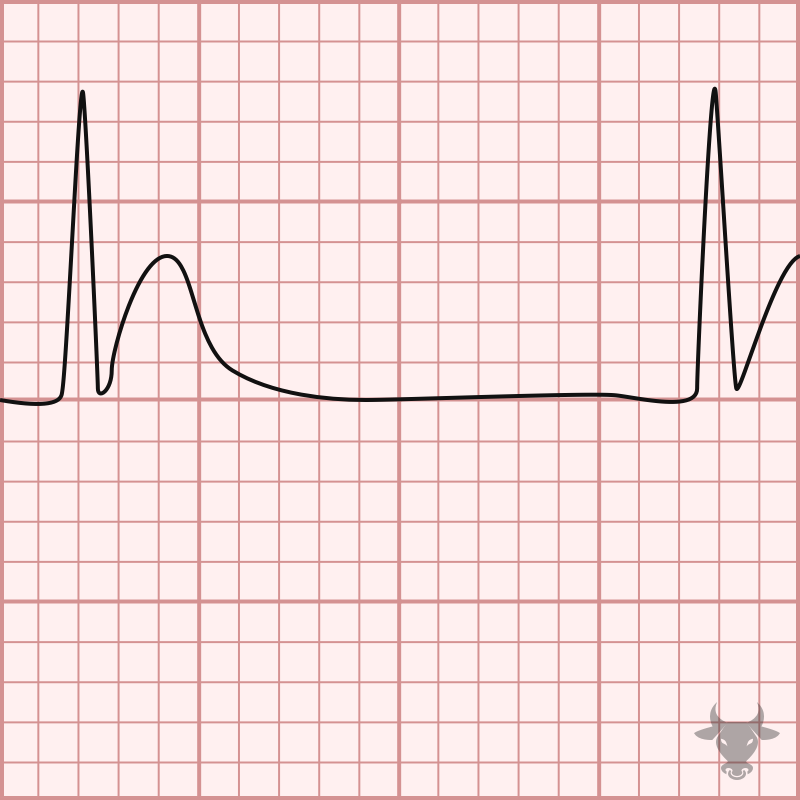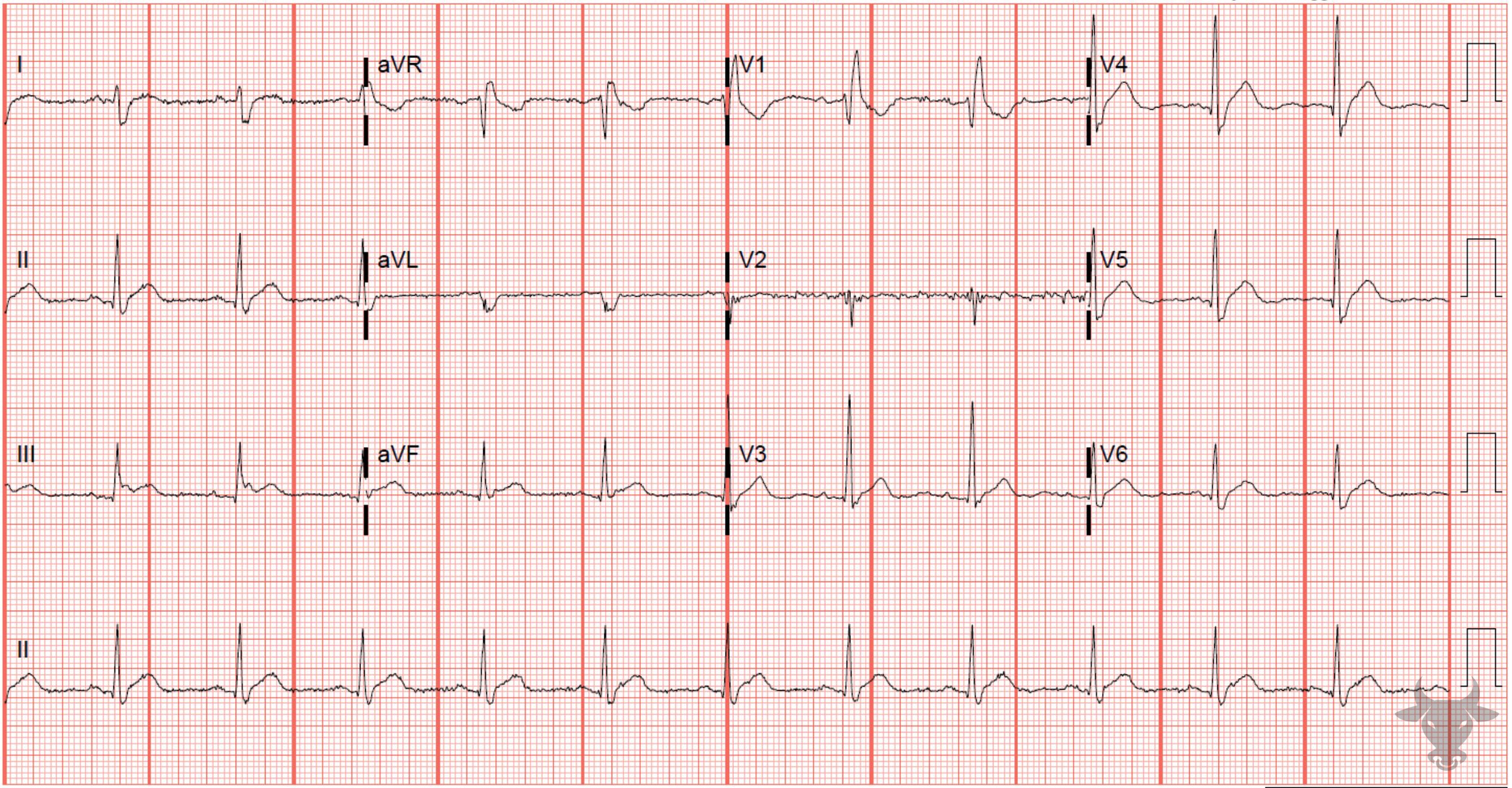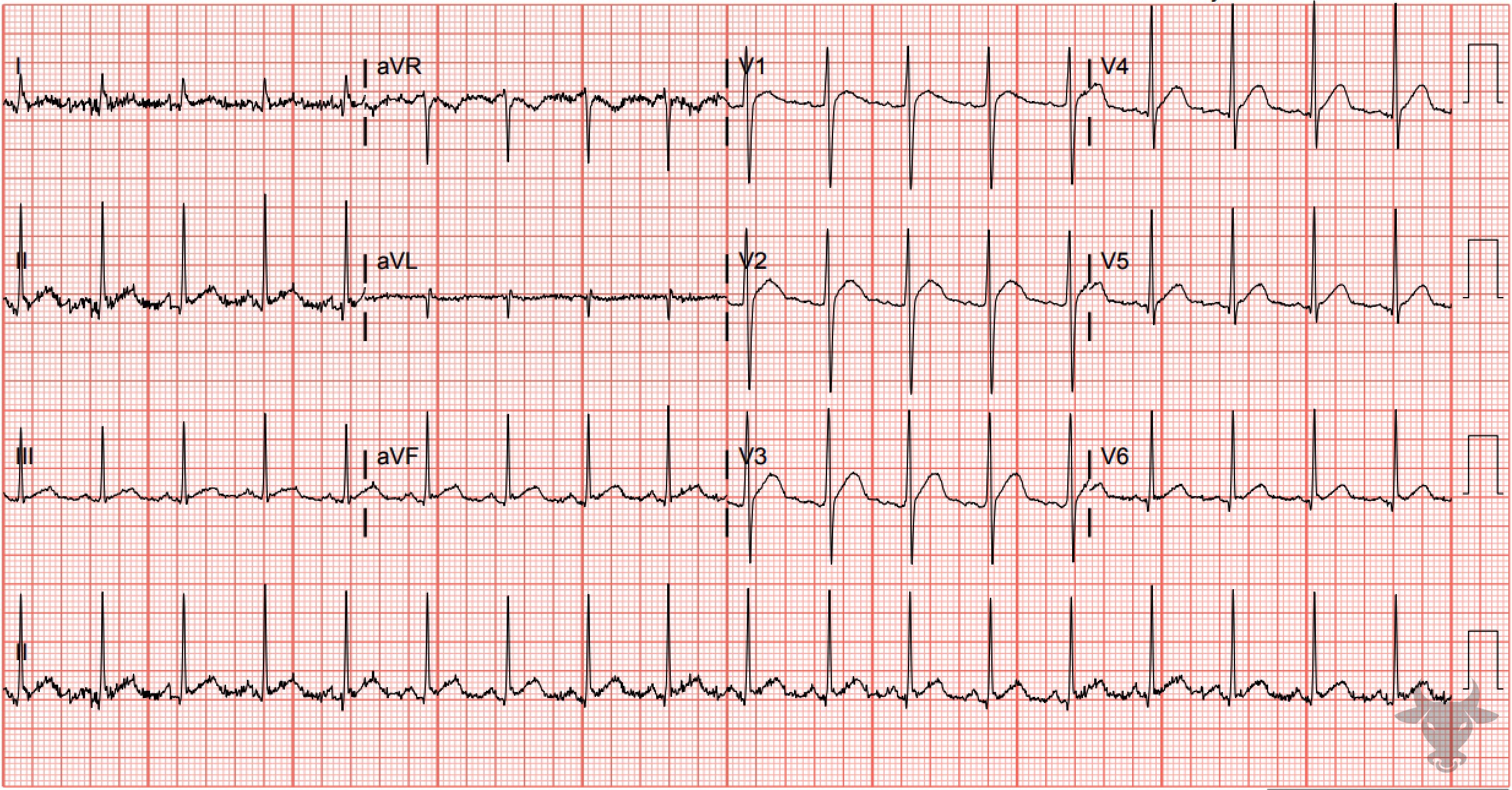The identification of ECG changes associated with electrolyte derangements including hypercalcemia is critical as the associated conduction abnormalities carry the risk of progression to fatal ventricular dysrhythmias (such as ventricular fibrillation). ECG findings commonly associated with hypercalcemia include shortening of QT interval (QTC <360ms) and the presence of Osborn J-waves. Shortening of the QT interval can result in a “high-takeoff” of the ST-segment, mimicking myocardial ischemia or infarction.
Hypercalcemia

Examples

Hypercalcemia
The QT interval is short with essentially zero ST segment. There is also a right bundle branch block.
Hypercalcemia
Hypercalcemia resulting in a short QT interval. Shortening of the QT interval can result in a “high-takeoff” of the ST-segment, mimicking myocardial ischemia or infarction.References
- Nishi, S., Barbagelata, N., Atar, S., Birnbaum, Y., Tuero, E. (2006). Hypercalcemia-induced ST-segment elevation mimicking acute myocardial infarction Journal of Electrocardiology 39(3), 298-300.
- Turhan, S., Kilickap, M., Kilinc, S. (2005). ST-segment elevation mimicking acute myocardial infarction in hypercalcaemia Heart 91(8), 999.
- Ashizawa, N., Arakawa, S., Koide, Y., Toda, G., Seto, S., Yano, K. (2003). Hypercalcemia Due to Vitamin D Intoxication with Clinical Features Mimicking Acute Myocardial Infarction Internal Medicine 42(4), 340-344.
- Kiewiet, R., Ponssen, H., Janssens, E., Fels, P. (2004). Ventricular fibrillation in hypercalcemic crisis due to primary hyperparathyroidism. The Netherlands journal of medicine 62(3), 94-6.
- Diercks, D., Shumaik, G., Harrigan, R., Brady, W., Chan, T. (2004). Electrocardiographic manifestations: electrolyte abnormalities The Journal of Emergency Medicine 27(2), 153-160.
